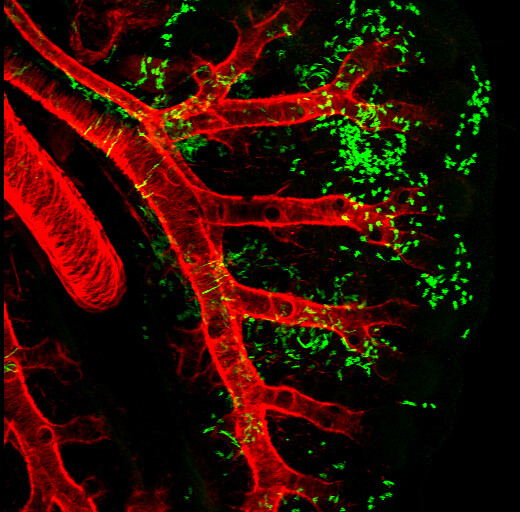Penn: Stem Cell in Heart and Lung Development Explains Adaption for Life on Land
The evolution of adaptations for life on land have long puzzled biologists – are feathers descendents of dinosaur scales, how did arms and legs evolve from fins, and from what ancient fish organ did the lung evolve?
Biologists have known that the co-development of the cardiovascular and pulmonary systems is a recent evolutionary adaption to life outside of water, coupling the function of the heart with the gas exchange function of the lung. And, the lung is one of the most recent organs to have evolved in mammals and is arguably the most vital for terrestrial life.
The coordinated maturation of the cells of these two systems is illustrated during embryonic development, when the primitive lung progenitor cells protrude into the primitive cardiac progenitor cells as the two organs develop in parallel to form the cardiopulmonary circulation. However, little is known about the molecular cues guiding this simultaneous development, and how a common progenitor cell for both organs may influence the pathology of such related diseases as pulmonary hypertension.
In a new paper published this week online in Nature, a team from the Perelman School of Medicine, University of Pennsylvania, shows that the pulmonary vasculature, the blood vessels that connect the heart to the lung, develops even in the absence of the lung. Mice in which lung development is inhibited still have pulmonary blood vessels, which revealed to the researchers that cardiac progenitors, or stem cells, are essential for cardiopulmonary co-development.
The Penn team, led by Edward E. Morrisey, PhD, professor of Medicine and Cell and Developmental Biology and scientific director of the Penn Institute for Regenerative Medicine, identified a population of multi-potent CardioPulmonary mesoderm Progenitor cells they named CPPs. The CPPs can be distinguished from many other early embryonic cells by the expression of a well-studied signaling molecule Wnt2.
“We asked if these progenitor cells are capable of generating both heart and lung derivatives,” says Morrisey. “Our data show that Wnt2-positive cells exist prior to lung development and help coordinate lung and heart co-development by generating cell types in both tissues.”
The issue of how the lung develops and connects to the cardiovascular system has intrigued the Morrisey lab for many years. “It’s pretty obvious to anyone who has looked at the anatomy of most terrestrial animals that the heart and lung are intimately linked. This is even reflected in clinical medicine where in many places, including the Perelman School of Medicine, the Division of Cardiovascular Medicine was once referred to as the Division of Cardiopulmonary Medicine,” notes Morrisey.
Click here to view the full release.








